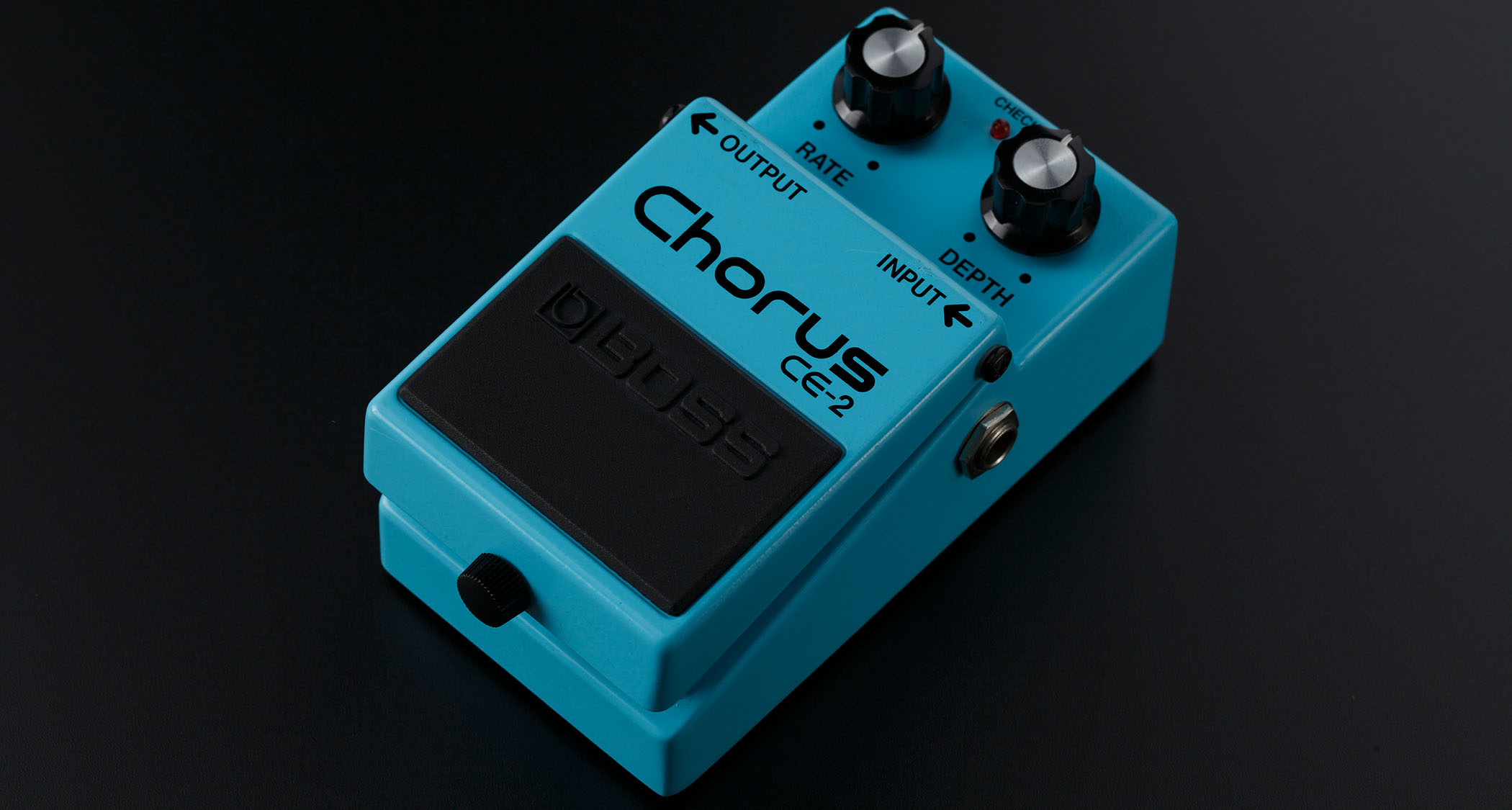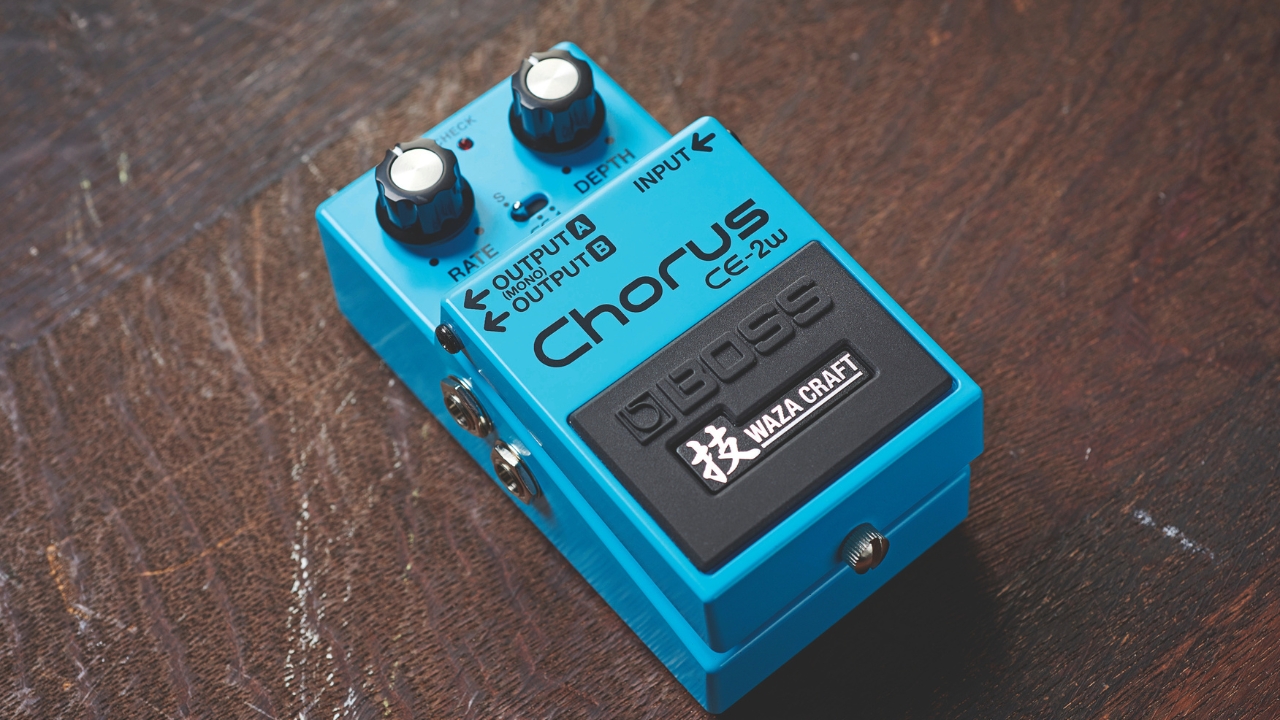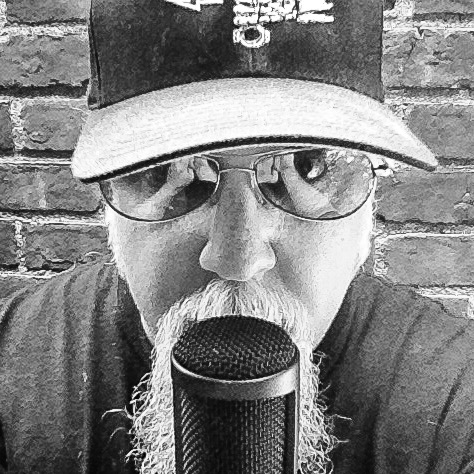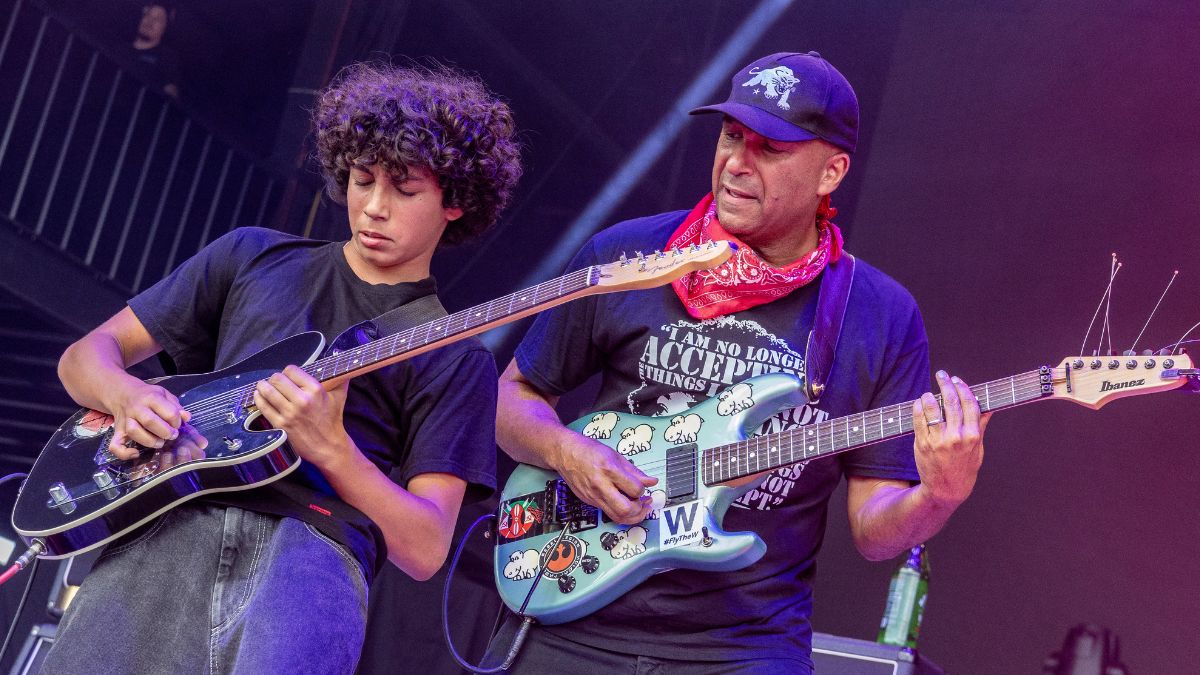“Pretty much everyone who used chorus during the ’80s had a Boss CE-2 at some point or another”: How a little dual-knob blue chorus pedal from Boss took over the world
What was so great about the CE-2? It had everything. It was affordable, built like a tank, had simple controls and lush tones that defined an era

It might be a gross oversimplification to state that the chorus pedal defined the guitar sound of the ’80s, but the effect did indeed appear on a hell of a lot of recordings during the entire decade by artists from almost every genre, including new wave, alternative, funk, metal, punk, jazz, country and probably even a few blues tracks.
Although it wasn’t the only chorus effect around at the time, the Boss CE-2 Chorus pedal played a huge role in the popularity and predominance of this effect during this period.
Several chorus effects preceded the Boss CE-2’s introduction in late 1979. Roland’s Jazz Chorus series amps whetted many guitarists’ appetites for the chorus effect, but most players didn’t want to be limited to a particular amp just to use the effect.
Standalone chorus pedals like the Boss CE-1 Chorus Ensemble introduced in 1976 and the Electro-Harmonix Clone Theory released in 1977 made the effect more popular, as did flangers like the EHX Electric Mistress and ADA Flanger, which could be tweaked to provide superb chorus effects.
All of the preceding chorus effects were perfectly fine, but the Boss CE-2 hit all the sweet spots – affordable price, bullet-proof construction, simple controls and lush tones – that made it an instant hit from the day it first reached the market. Featuring only Rate and Depth controls, the CE-2 is basically “idiot proof” and provides great-sounding chorus effects no matter where the knobs are set.
Even with the Rate and Depth knobs fully maxed, it produces a gently warbling vibrato effect that is more warm and welcoming than the woozy and weird sounds from most other chorus pedals set to their extremes.
The CE-2’s warm, rich mids play a huge part in its allure. Many chorus effects tend to scoop the mids, which can result in a brilliant, shimmering sound but with the drawback of tending to get lost in denser mixes.
All the latest guitar news, interviews, lessons, reviews, deals and more, direct to your inbox!
The CE-2’s chorus punches to the front of the mix, thanks to a slight level boost and its distinctive midrange. The CE-2 also sounds equally good with either clean or overdriven tones, and it pairs quite well with bass, especially fretless.
Boss manufactured the CE-2 in Japan until 1988, when production shifted to Taiwan, and as a result, earlier made-in-Japan units sell for premium prices.
If opting for an original unit, forget silver vs. black screws, black vs. green labels, Japan vs. Taiwan and look for a unit featuring an MN3007 BBD chip, which is more desirable, thanks to the circuit’s lower noise and improved clean headroom.

However, as great as vintage units can be, Boss’s recent CE-2W Waza Craft unit offers a much more attractive alternative, thanks to its dead-on accurate CE-2 sounds combined with compelling classic CE-1 chorus and vibrato effects.
Pretty much everyone who used chorus during the ’80s had a Boss CE-2 at some point or another.
Notable ’80s CE-2 aficionados include James Honeyman-Scott of the Pretenders (who used an EHX Clone Theory on the first Pretenders album but swapped to a CE-2 for his live rig), David Gilmour (who used a CE-2 in lieu of the Uni-Vibes and phase shifters he relied on earlier), Johnny Marr, Billy Duffy, Robert Fripp and Rory Gallagher. Current fans include John Mayer and Keith Urban.
- This article first appeared in Guitar World. Subscribe and save.
Chris is the co-author of Eruption - Conversations with Eddie Van Halen. He is a 40-year music industry veteran who started at Boardwalk Entertainment (Joan Jett, Night Ranger) and Roland US before becoming a guitar journalist in 1991. He has interviewed more than 600 artists, written more than 1,400 product reviews and contributed to Jeff Beck’s Beck 01: Hot Rods and Rock & Roll and Eric Clapton’s Six String Stories.
You must confirm your public display name before commenting
Please logout and then login again, you will then be prompted to enter your display name.


